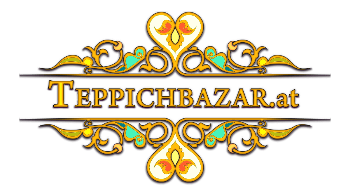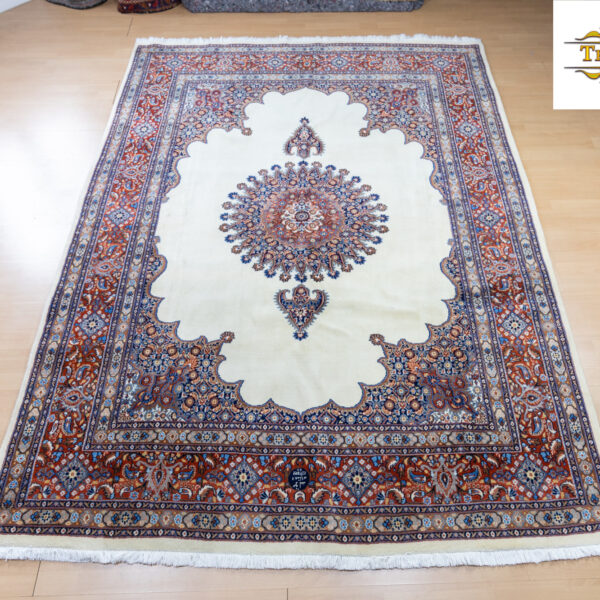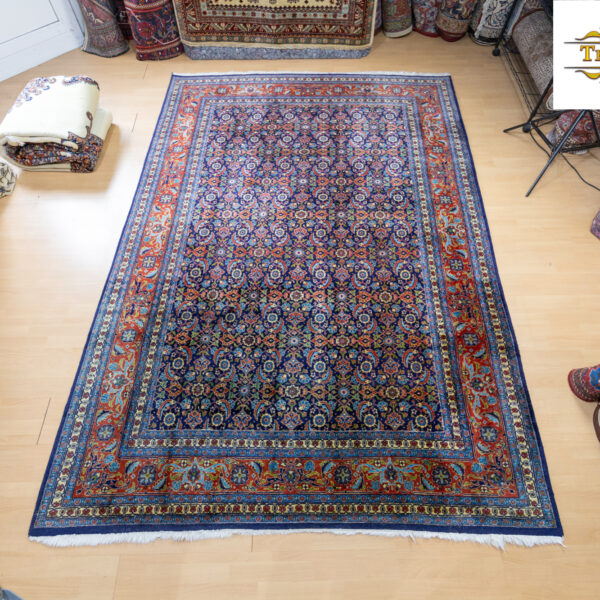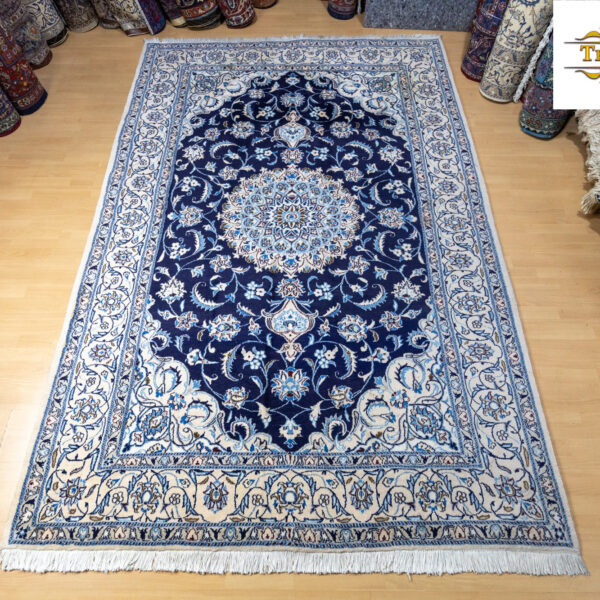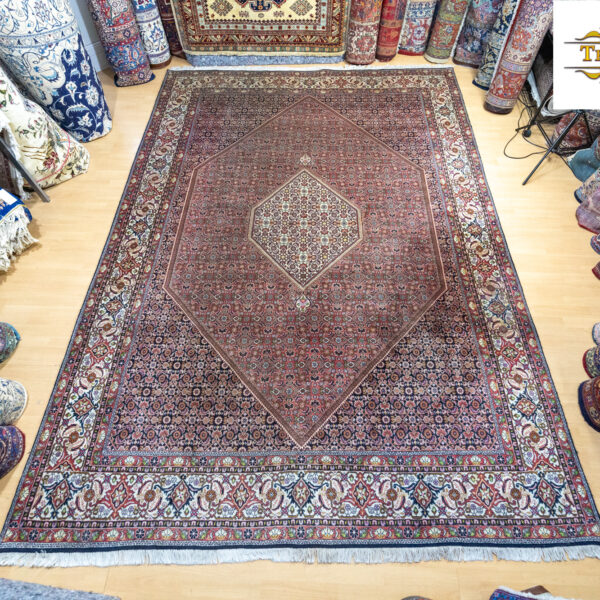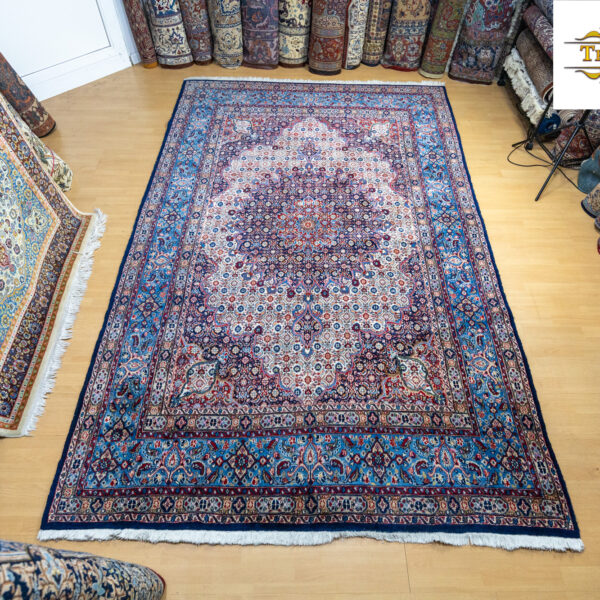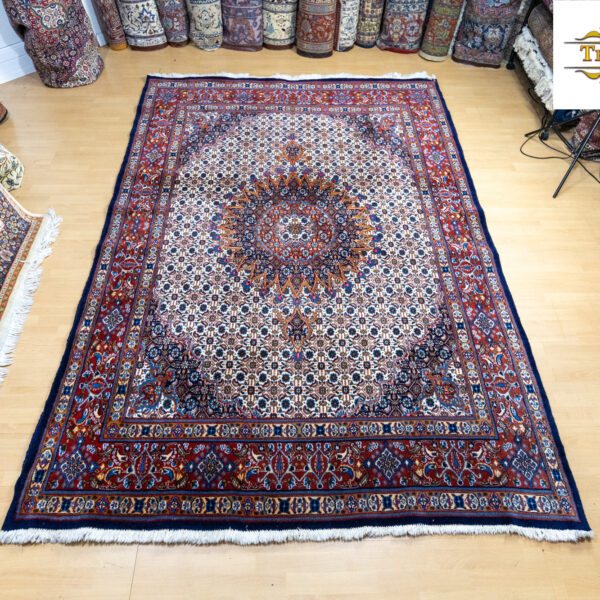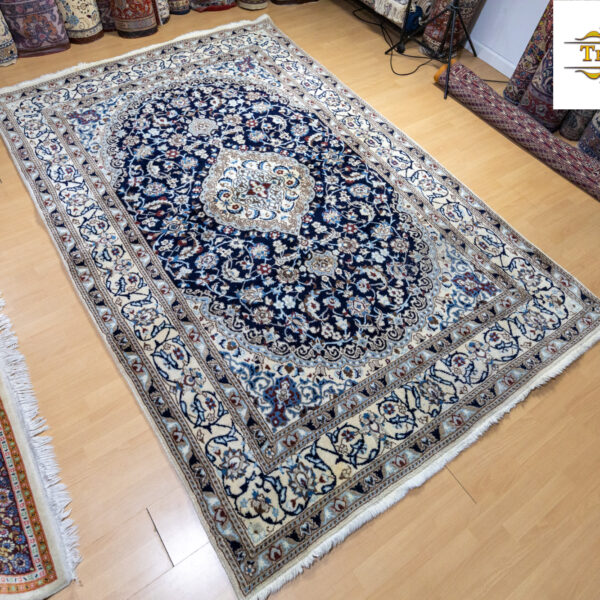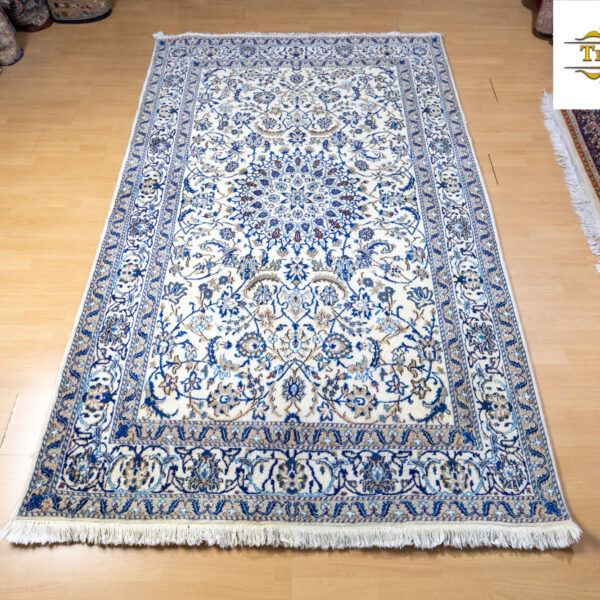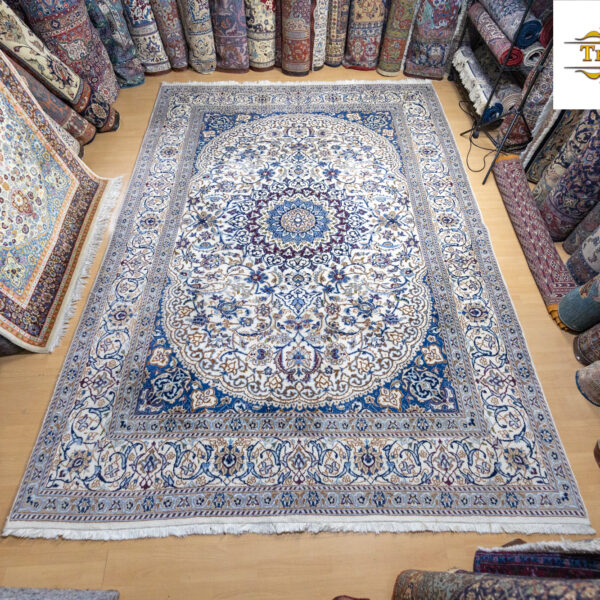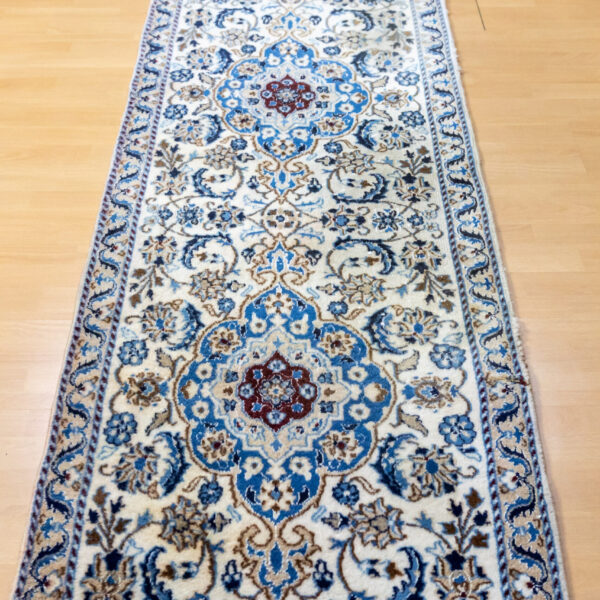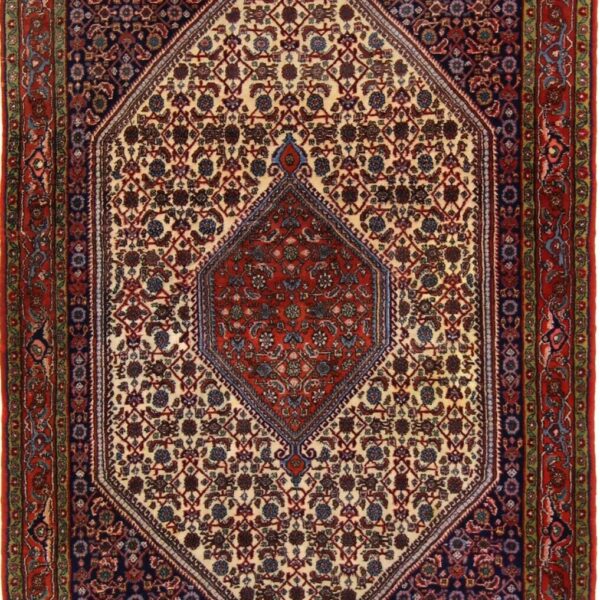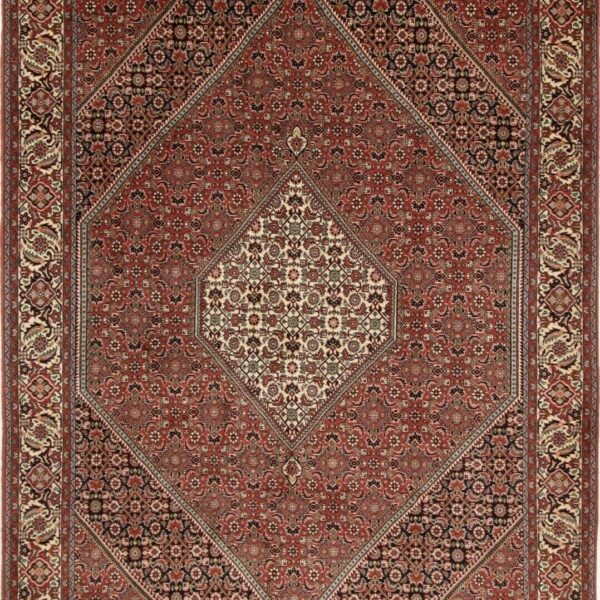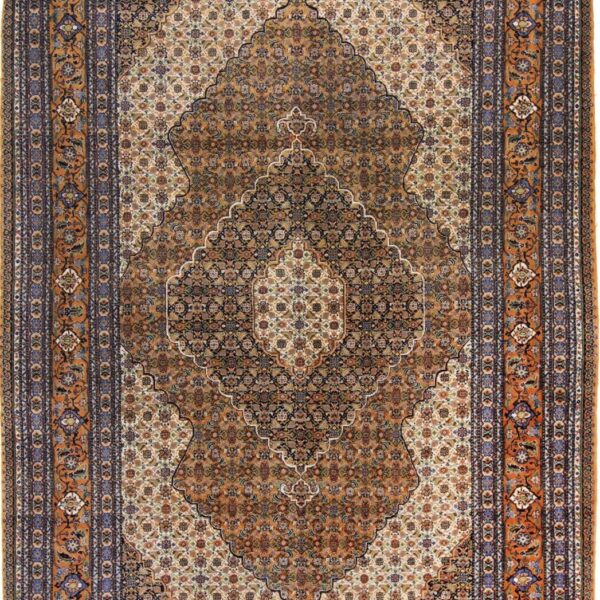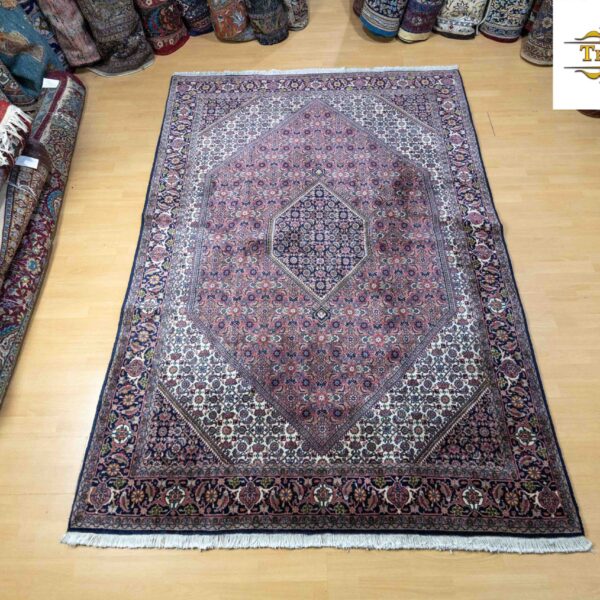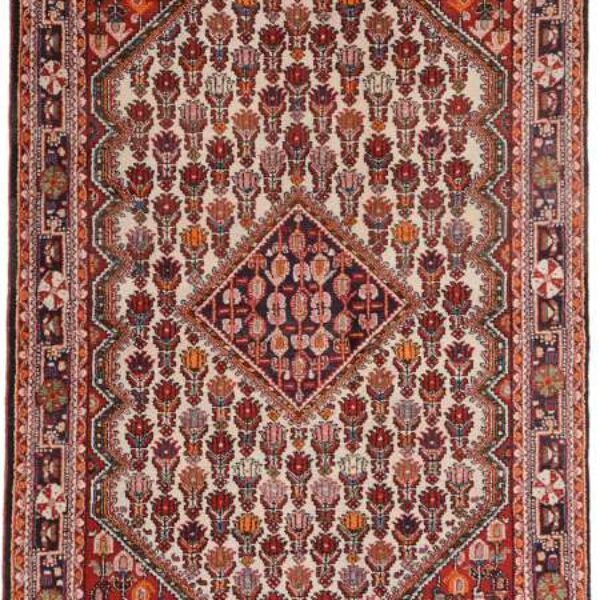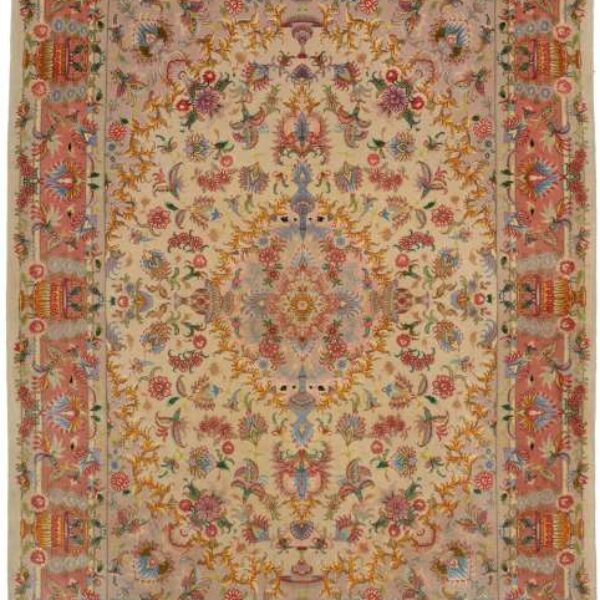Bijar
Bijar (also Bidjar, Persian بيجار Bijār)
is a city in the Iranian province of Kordestan. Around 2006 residents were contacted in 46.156.[2] Due to its location at 1920 m altitude, Bijar is also called the roof of Iran. The city lies on an ancient trade route from Hamadan to Tabriz.
Most residents of Bijar are Kurds. Bidjar is internationally known for its elegant and antique carpets (→ Persian carpets) and textiles. The word Bijar could be a variant of the Kurdish word Bajar/Badshar for city and the full name of the city is Bijar-e Garrus. Other alleged derivations of the name Bijar include Bid-zar (pasture land), which is linguistically unusual.
Manufacture of carpets in Bijar
The town of Bijar is located about 80 km northeast of Sanandaj. These two cities and their surroundings were already known as important centers of carpet weaving in the 18th century. The carpets from the Bijar region have different motifs than the Senneh carpets. Distinguish between “urban” and “rural” Bijar carpets. Bijar carpets have lost their dense pile, which is created with the special wet-weaving technique and with the help of a special tool. The warp, weft and pile threads are kept moist throughout the knotting process. As the finished rug dries, the wool expands and the texture becomes very compact. In addition, the weave is condensed by suspending the knot by vigorously hammering on a device in the form of a nail that is passed between the warp threads hanging as they are being tied. Alternatively, the warp threads are layered in depth and the fabric is additionally compressed with weft threads of different thicknesses. Usually one of the three weft threads is significantly thicker than the others. The knots are symmetrical, their density is 930-2100/dm², more rarely even over 6200/dm².
The colors of the Bijar carpets are very refined, light and dark blue and from rich to pale madder. The patterns are traditionally Persian, mainly Herati, but Mina Khani, Harshang and simpler medallion shapes can also be seen. Often the model is straighter. A feature is that ornaments often lack the usual accompanying contours in contrasting colors, which are particularly common in small-scale model elements. However, Bijar carpets are more recognizable by their particular, stiff and heavy texture than by their pattern. Carpets from the Bijar region are difficult to fold without damaging the floor. Carpets of normal size, but showing only examples of possible fields and borders, are often referred to in the trade as "Wagireh" (patterned carpet). They are often seen in the Bijar region. Bijar still exports new carpets, often with less elaborate Herati designs and good synthetic colors.[59]
Bijar and its surroundings are a center of carpet production. Bidjar carpets enjoy a special reputation due to their fine and very robust structure. They are particularly resistant because the weft threads are moistened and hammered with an iron comb.
Since this is very tiring, Bidjar carpets are often knotted by men. The warp and weft are made of cotton, the fleece is made of wool and the fine espamplars are made of cork wool. If you use the Turkish knot. They are usually not made in factories, but at home according to the individual ideas of the weaver. This makes them lively and expressive.
Characteristic is the use of a version of the Herati motif that includes a small rosette between a rhombus. This basic motif often also runs along the central medallion (with its characteristic angular outline), but in this case it changes colour.
Other versions of Bijar carpets use floral designs, including a large eight-petal rosette. Mostly reds and blues. The best Bijar carpets are not knotted by the Kurds, but by the Afşar descendants in the village of Tekab, about 50 km west of Bijar.
- Du kannst „Verkauft W1(#232) 249x172cm Handgeknüpfter Perserteppich Bidjar Herati Orientteppich - Fischmuster Mahi Bidjar“ deinem Warenkorb nicht hinzufügen, weil das Produkt derzeit nicht vorrätig ist.
